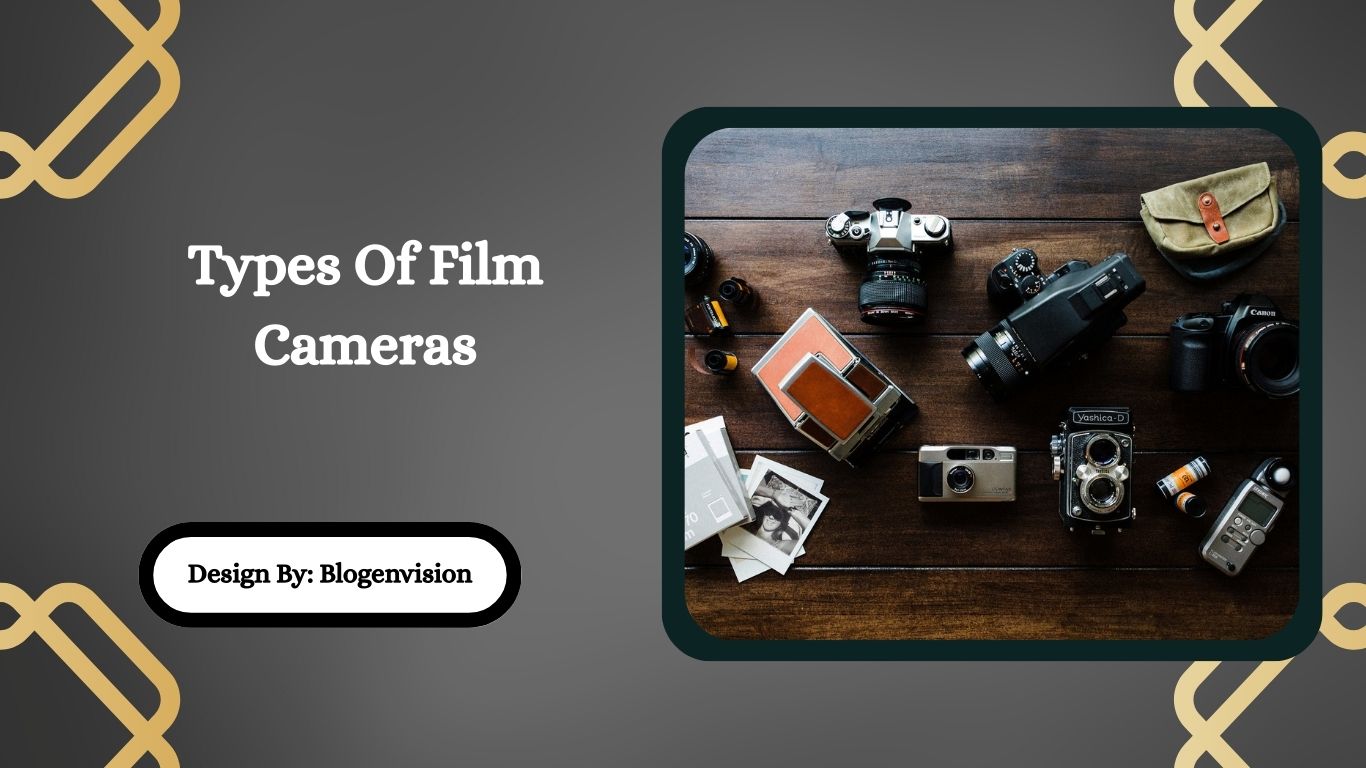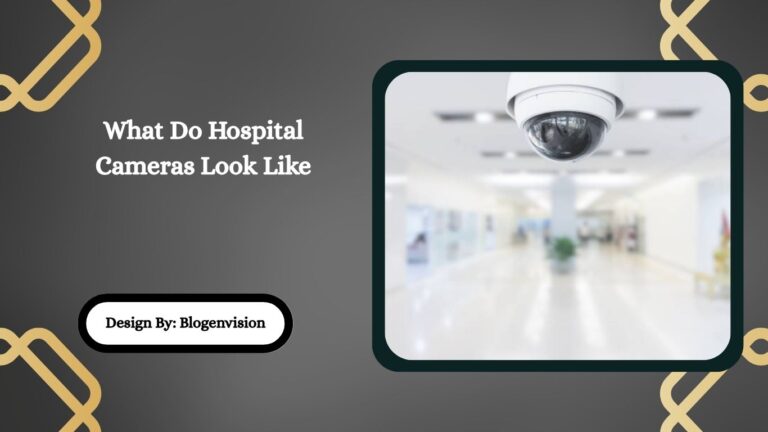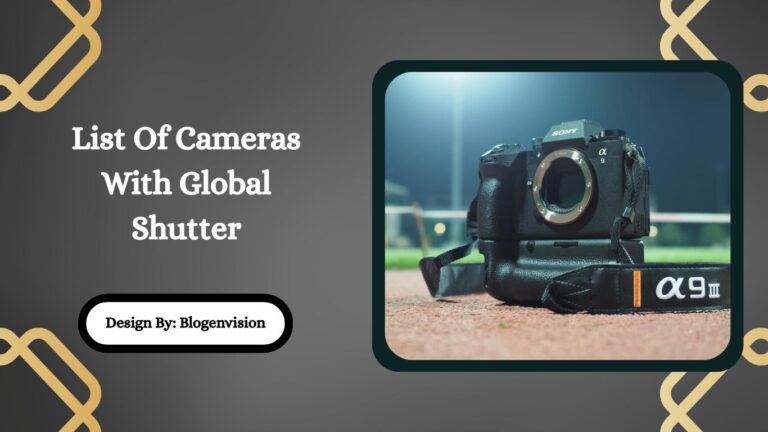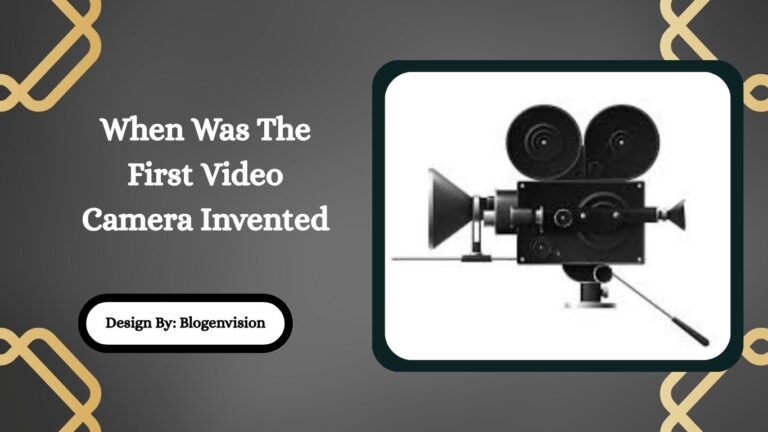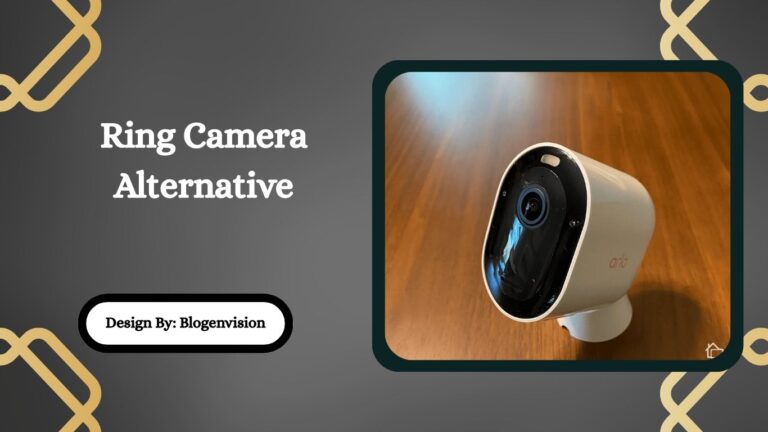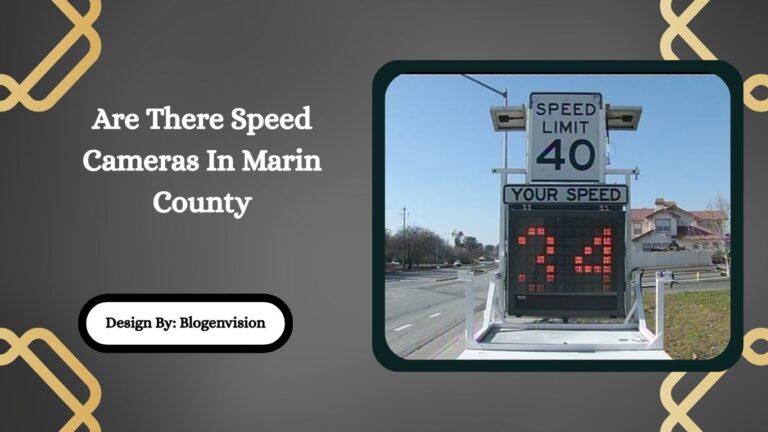Types Of Film Cameras – Beginner-Friendly Guide!
There are several types of film cameras, including 35mm, medium format, large format, instant, and rangefinder models. Each offers unique benefits for different photography styles, from casual snapshots to professional work.
Film cameras bring a special feeling to photography timeless, creative, and full of personality. Even in the digital age, many photographers still love using film. If you’re curious about the different types of film cameras, you’re in the right place.
In this guide, we’ll explore:
- What film cameras are
- Popular types of film cameras
- How each type works
- Pros and cons of each
- Who they’re best for
- Tips for beginners
What Is a Film Camera?
A film camera is a device that captures pictures on photographic film, a light-sensitive material. When light hits the film through the lens, it records an image. The film is then developed in a lab or darkroom.
Unlike digital cameras, which use sensors and memory cards, film cameras create physical negatives or slides that must be processed.
Why Choose a Film Camera?

Film cameras offer a unique experience:
- Better dynamic range in some cases
- Physical prints and negatives
- Slower, more thoughtful photography
- Beautiful grain and color tones
- A creative, hands-on feel
1. 35mm Film Cameras
What Are They?
The most common and easiest to use. 35mm film cameras are perfect for beginners and hobbyists.
Common Types:
- Point-and-shoot cameras – Fully automatic
- SLRs (Single-Lens Reflex) – Manual controls, interchangeable lenses
Good For:
- Everyday photography
- Learning film basics
- Street and travel photography
Pros:
✅ Affordable and easy to find
✅ Compact and lightweight
✅ Great film availability
Cons:
❌ Not as sharp as medium/large format
❌ Limited enlargement potential
2. Medium Format Film Cameras
What Are They?
These use 120 or 220 film, producing larger negatives for sharper images and more detail.
Common Types:
- TLRs (Twin Lens Reflex) – Dual-lens setup
- SLRs – Interchangeable lenses, more control
Good For:
- Portraits
- Weddings
- Editorial and fine art
Pros:
✅ Excellent image quality
✅ Great depth and color
✅ Larger prints possible
Cons:
❌ Bulky and expensive
❌ Slower shooting process
3. Large Format Film Cameras
What Are They?
Uses sheet film usually 4×5 or 8×10 inches. Offers unmatched image quality.
Good For:
- Studio work
- Landscape and architecture
- Fine art photography
Pros:
✅ Highest resolution
✅ Amazing detail and tone
✅ Full creative control
Cons:
❌ Very heavy and slow to use
❌ Expensive and complex
4. Instant Film Cameras
What Are They?
Cameras that print your photo right after you take it. Popular brands include Polaroid and Fujifilm Instax.
Good For:
- Fun events
- Scrapbooking
- Instant memories
Pros:
✅ Instant results
✅ No need for labs
✅ Easy and fun
Cons:
❌ Expensive film
❌ Lower image quality
❌ Limited editing
5. Rangefinder Film Cameras
What Are They?
Manual focus cameras with a unique focusing system that uses a mirror and viewfinder.
Good For:
- Street photography
- Travel
- Quiet shooting
Pros:
✅ Lightweight and quiet
✅ Sharp lenses
✅ Compact size
Cons:
❌ Focus takes practice
❌ Not ideal for fast action
6. Disposable Film Cameras
What Are They?
Single-use plastic cameras with fixed settings and built-in film.
Good For:
- Parties and weddings
- Travel without worry
- Kids and beginners
Pros:
✅ Very easy to use
✅ Cheap
✅ No need to adjust settings
Cons:
❌ Poor image quality
❌ Can’t reuse
7. Subminiature Film Cameras
What Are They?
Tiny cameras using small film sizes like 16mm or 110 film.
Good For:
- Collectors
- Spy-style or creative photography
- Fun, vintage feel
Pros:
✅ Very small and portable
✅ Unique photos
Cons:
❌ Hard to find film and parts
❌ Lower image quality
Extra Features to Consider in Film Cameras

When choosing a film camera, think about these features:
- Manual vs. Automatic Settings
- Lens Compatibility
- Built-in Flash or Light Meter
- Film Loading System
- Battery Requirements
Some cameras are fully manual, giving you full control, while others are auto-everything, making them great for beginners.
Where to Buy Film Cameras Today
You can still find film cameras in:
- Vintage shops or flea markets
- Online marketplaces like eBay, KEH, or Etsy
- Camera stores that carry used gear
- Photography groups or Facebook Marketplace
Always check the camera’s condition and test if possible.
How to Choose the Right Type of Film Camera?
| 🎯 Your Goal | ✅ Recommended Camera |
| Beginner | 35mm point-and-shoot or SLR |
| Creative Fun | Instant or Disposable |
| Serious Hobbyist | 35mm SLR or Medium Format |
| Professional | Medium or Large Format |
| Travel Light | Rangefinder |
Tips for First-Time Film Shooters
- Start with 35mm it’s affordable and widely available
- Practice loading and rewinding film
- Use film with good lighting conditions
- Try black and white film it’s cheaper and easier to develop
- Take your time film makes you slow down and think
FAQs:
1. What is the best film camera for beginners?
A 35mm point-and-shoot or SLR camera is best for beginners. They’re easy to use, affordable, and widely available, making them perfect for learning film photography basics.
2. Why choose a medium format over 35mm?
Medium format cameras offer better image quality, detail, and depth, especially for portraits or studio work. However, they are bulkier and more expensive than 35mm options.
3. Are instant film cameras good for serious photography?
Instant film cameras are fun and great for casual or creative use, but they offer lower image quality and limited control, making them less ideal for serious photography.
4. Can you still buy film and get it developed?
Yes, many stores and online labs still sell and develop film. Popular options include Kodak, Fujifilm, and specialty labs for both color and black-and-white film.
5. What makes large format film cameras special?
Large format cameras use big negatives for unmatched image detail and tone. They’re ideal for professionals but are heavy, slow, and require more technical skill than other types.
Conclusion:
Film photography offers a hands-on, creative way to capture images, and the wide variety of film cameras means there’s something for everyone. Whether you prefer the ease of 35mm, the quality of medium format, or the fun of instant prints, each type has its charm. Exploring film cameras can enrich your photography journey and deepen your understanding of the art. Choose what fits your style, and enjoy the process!

